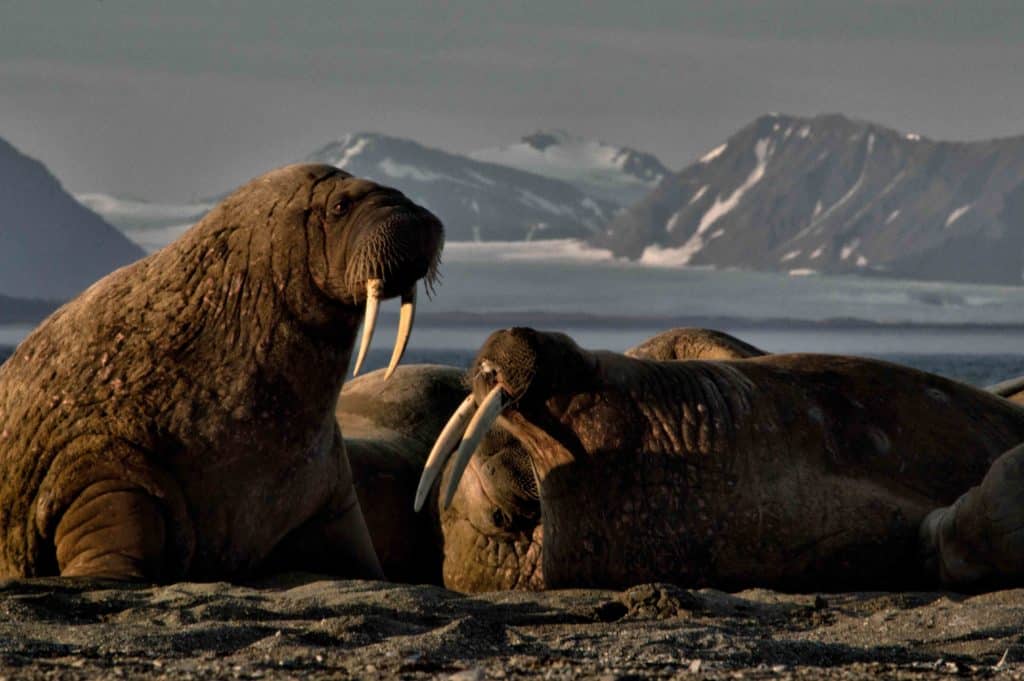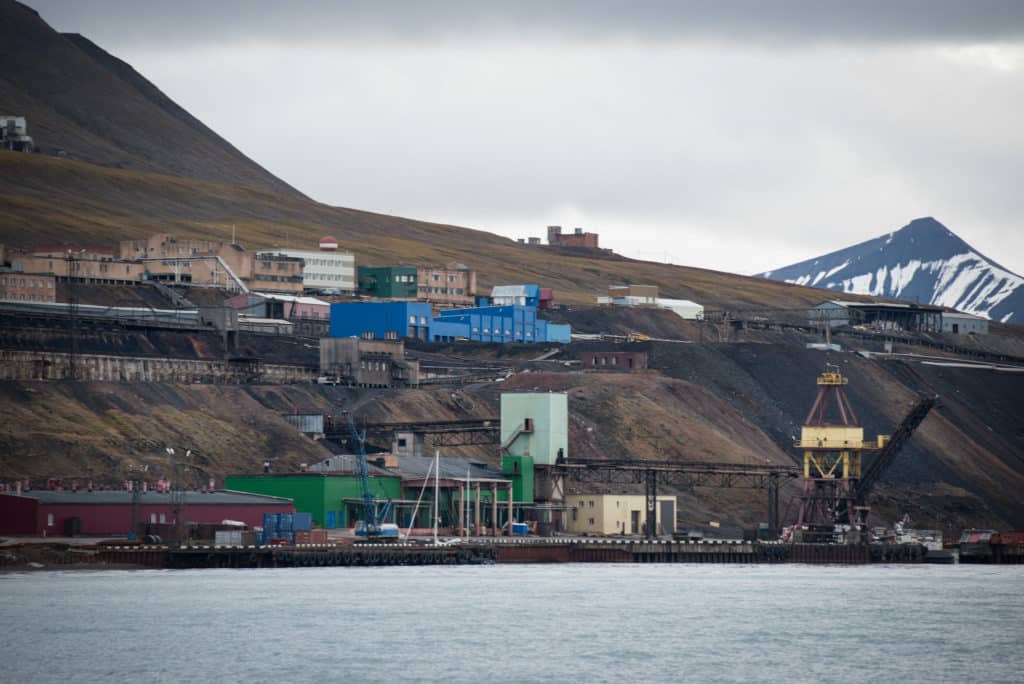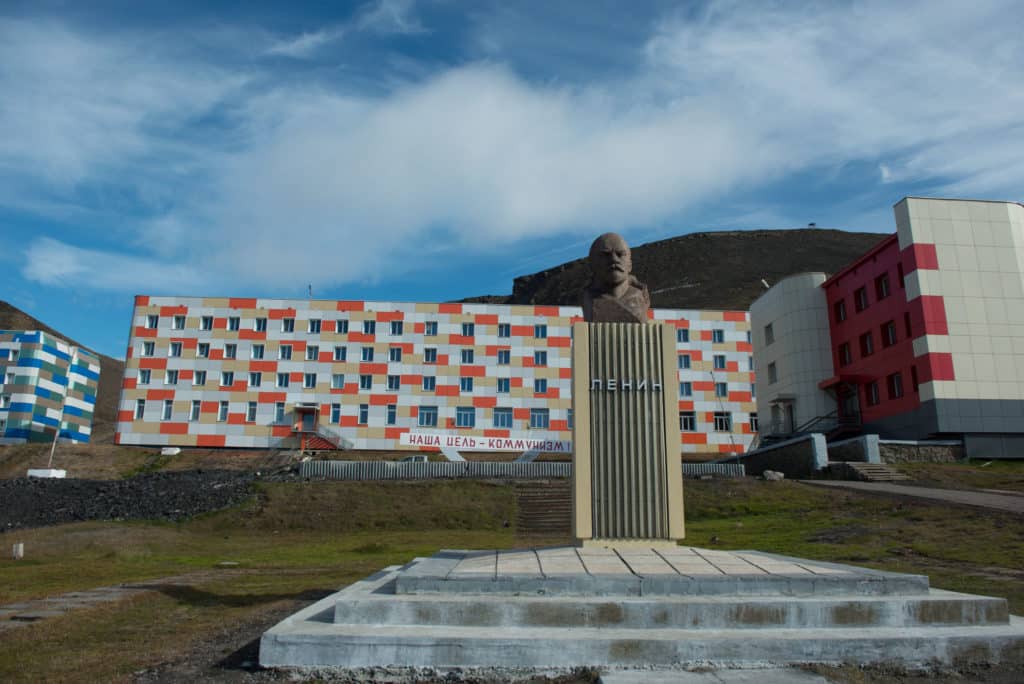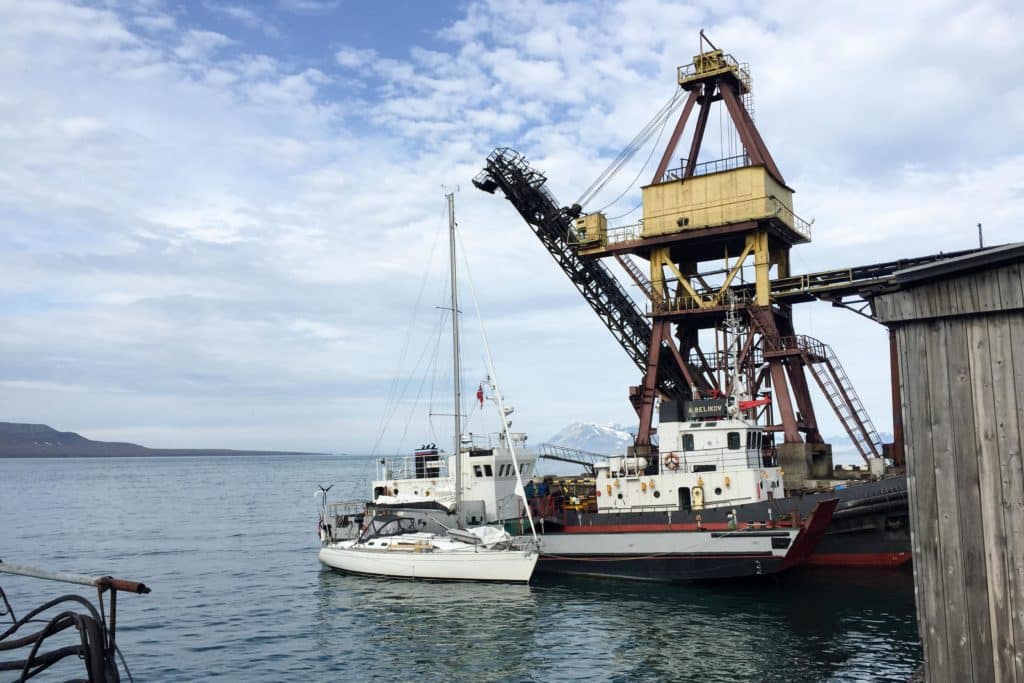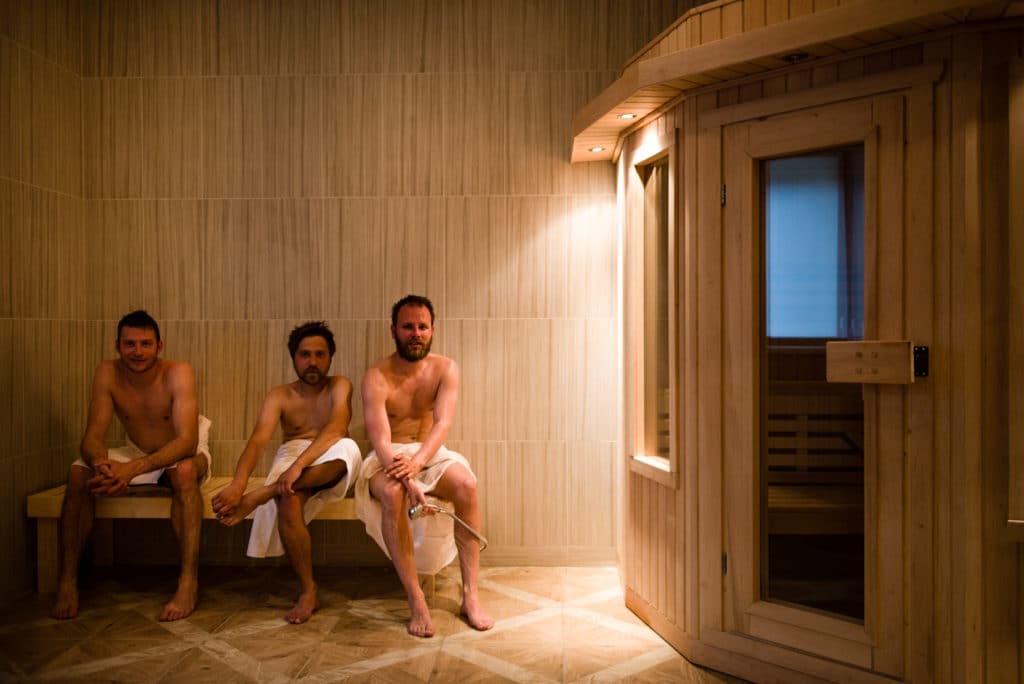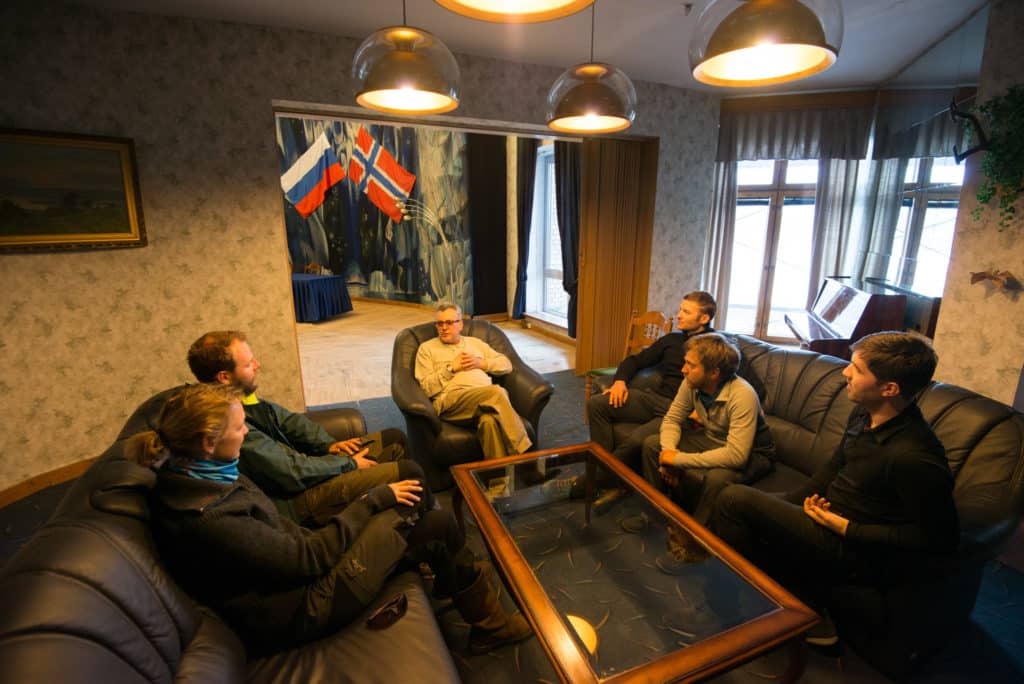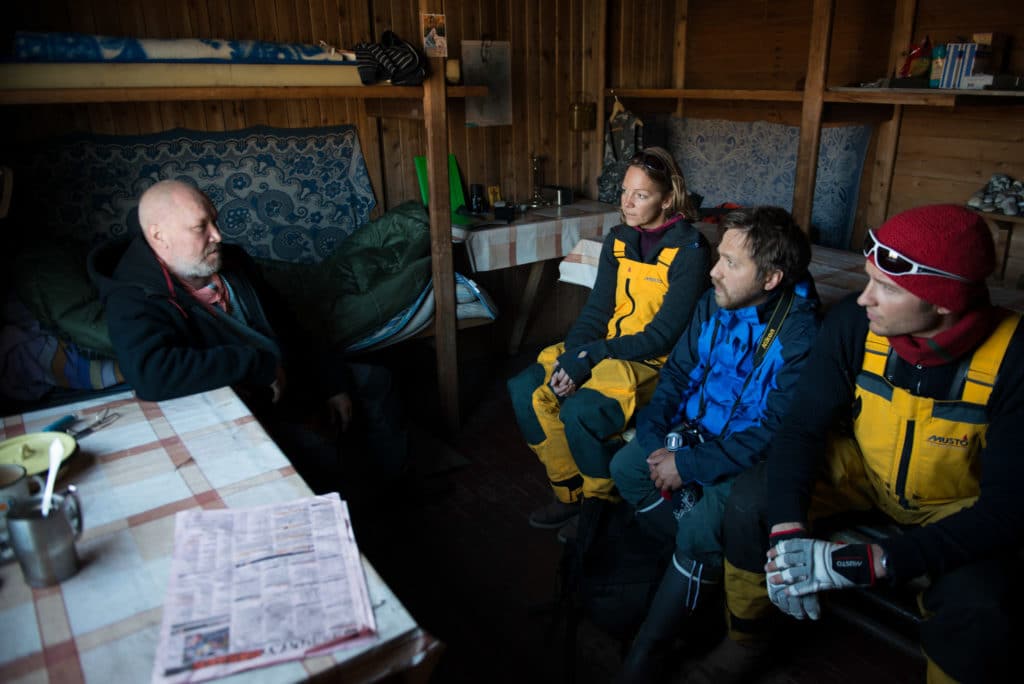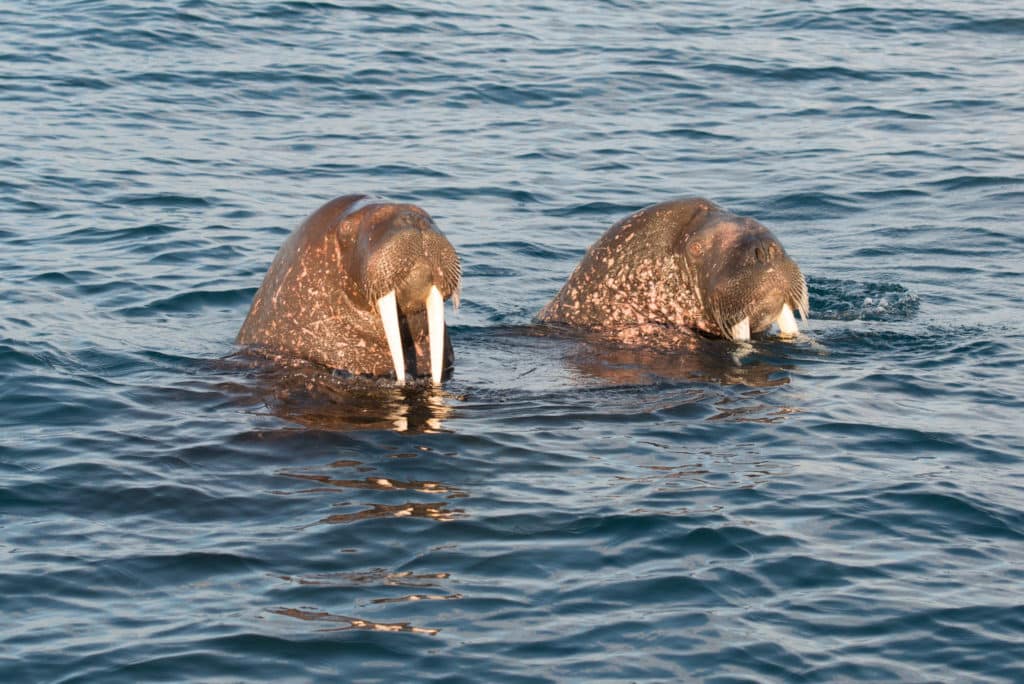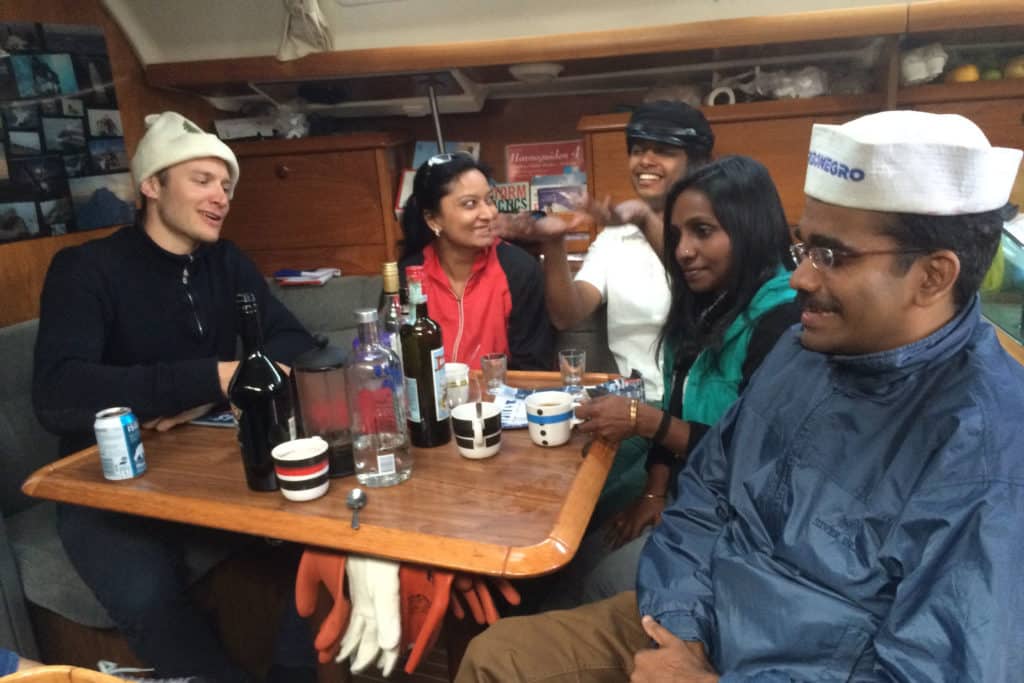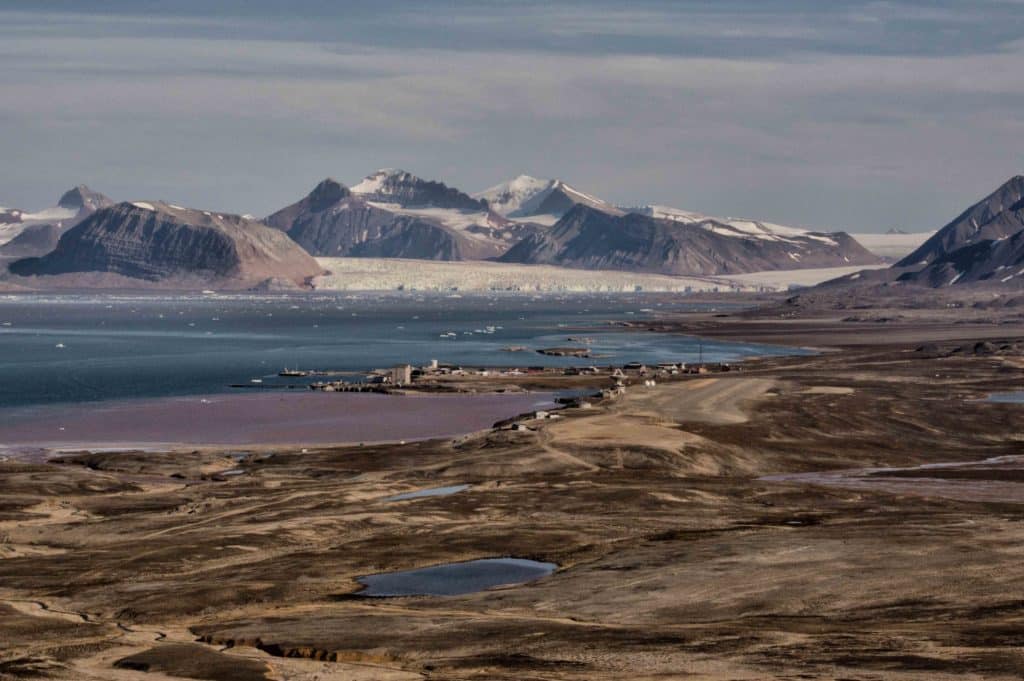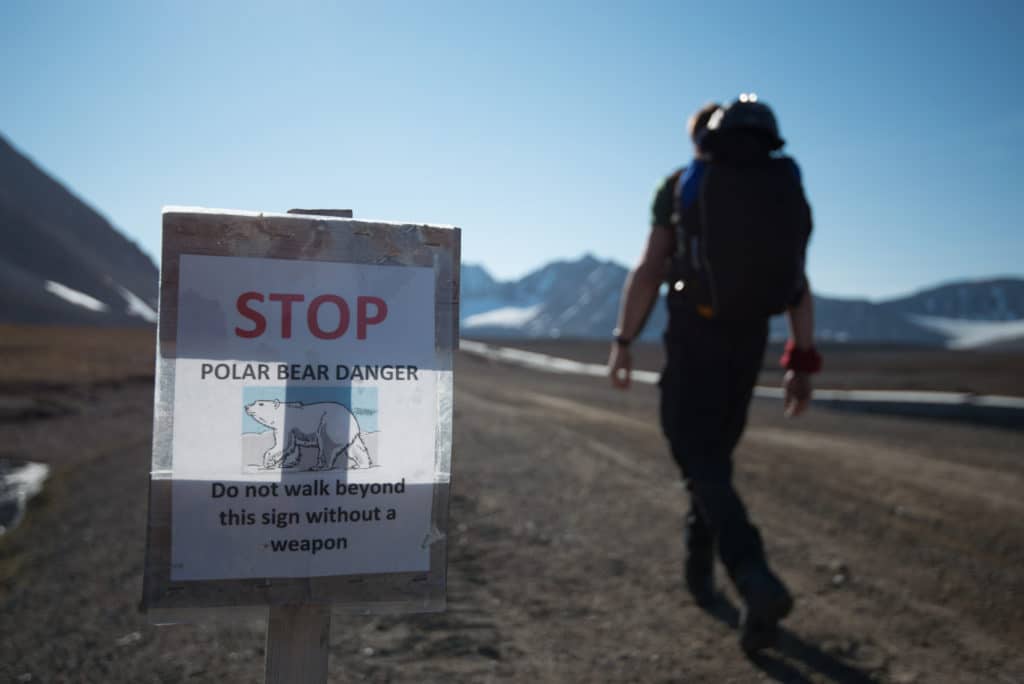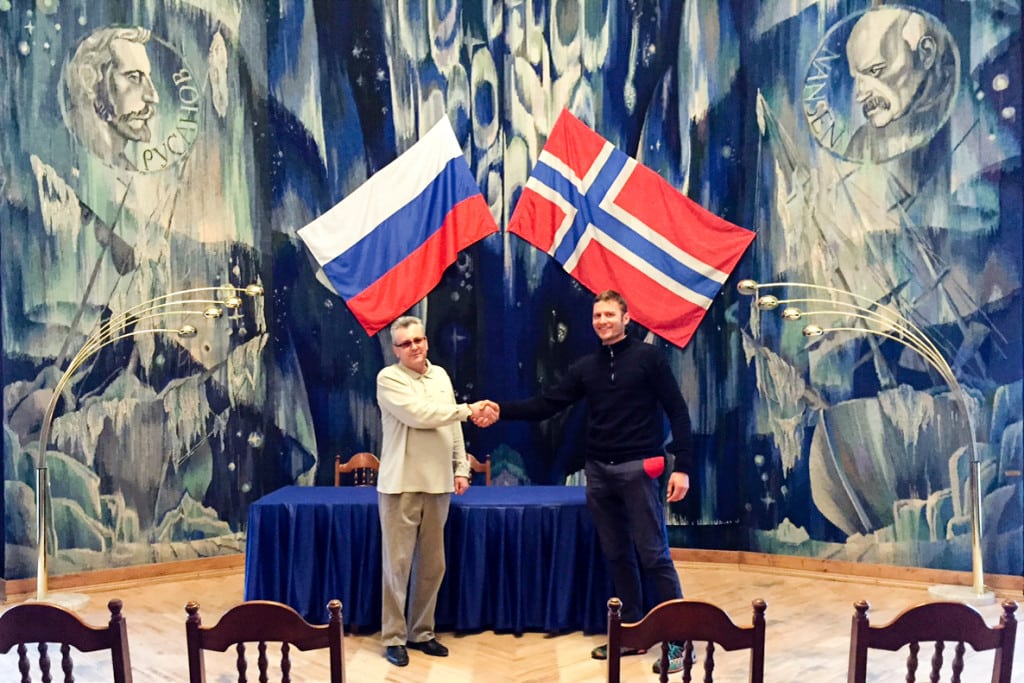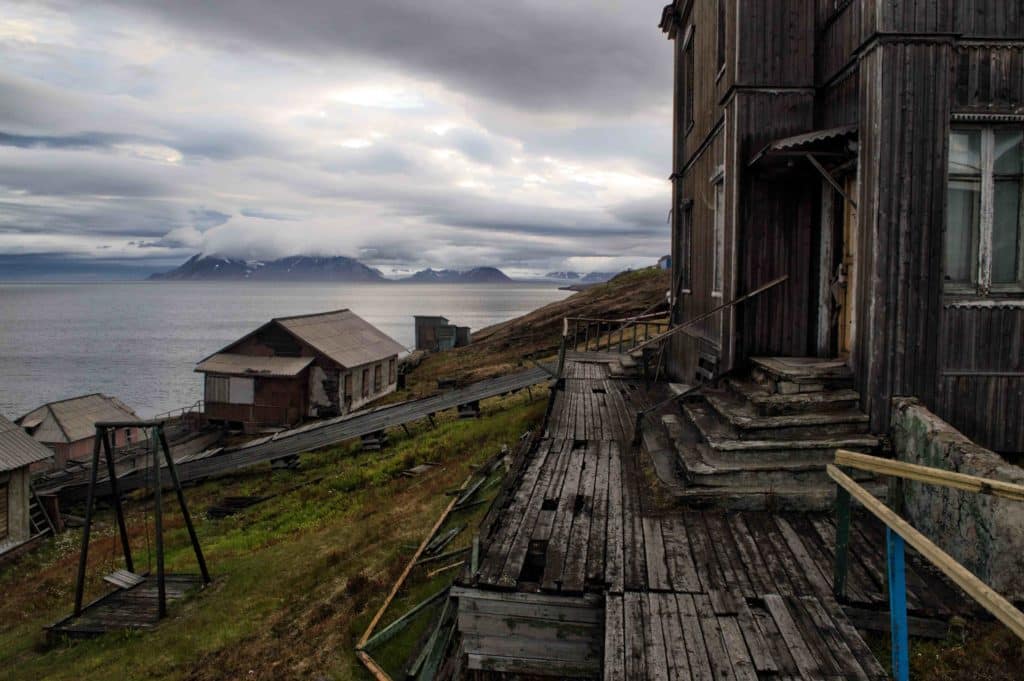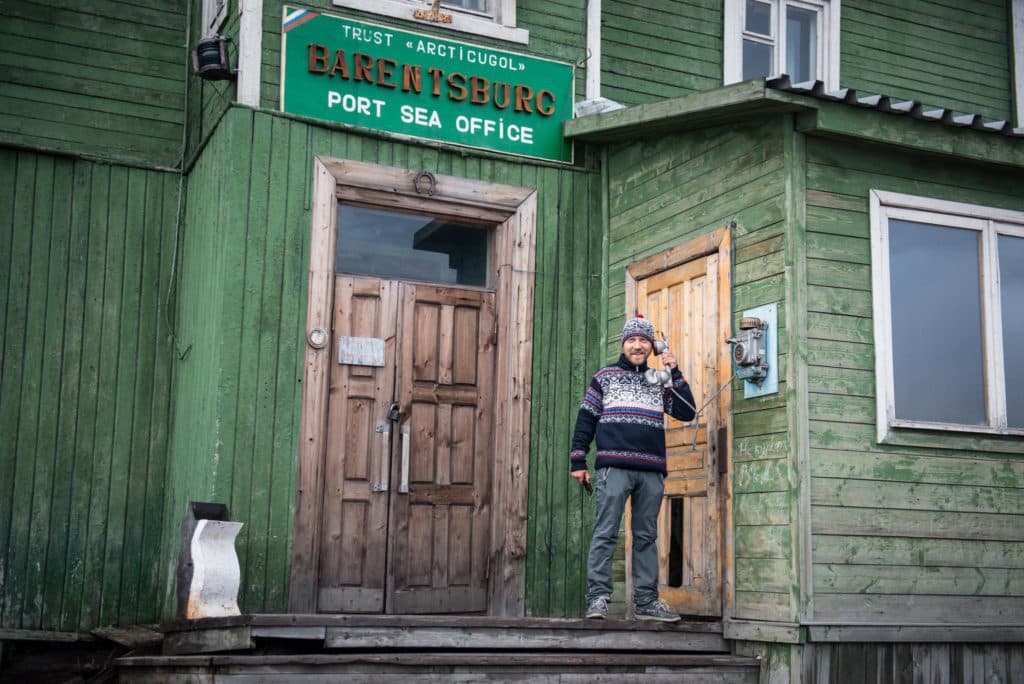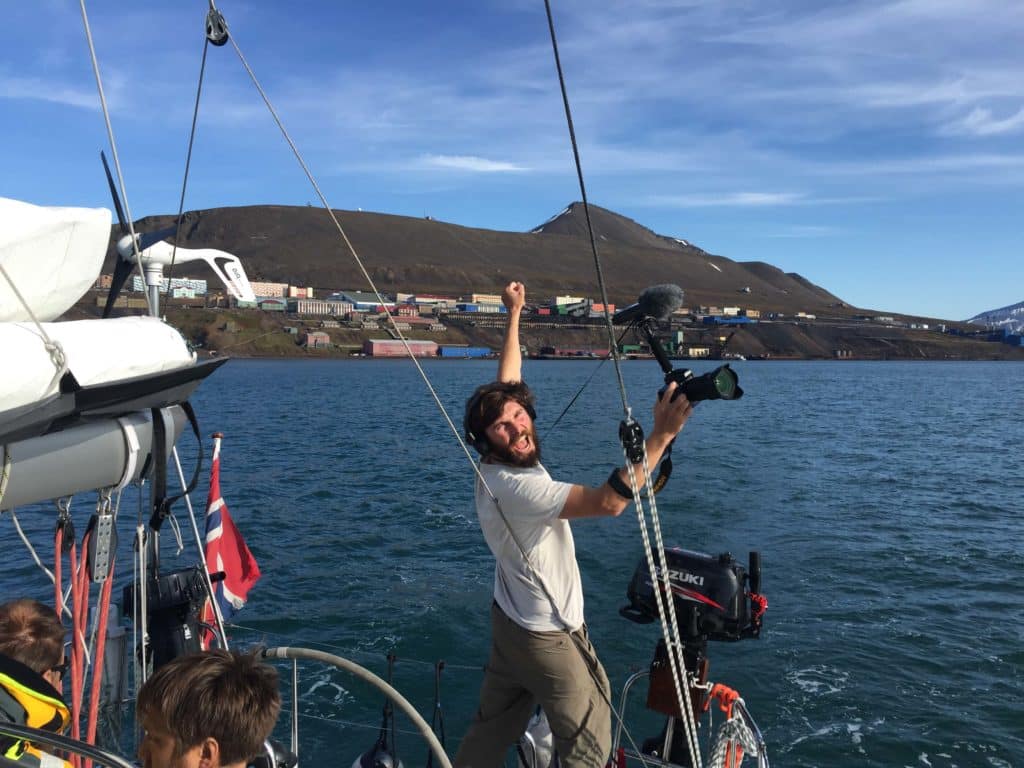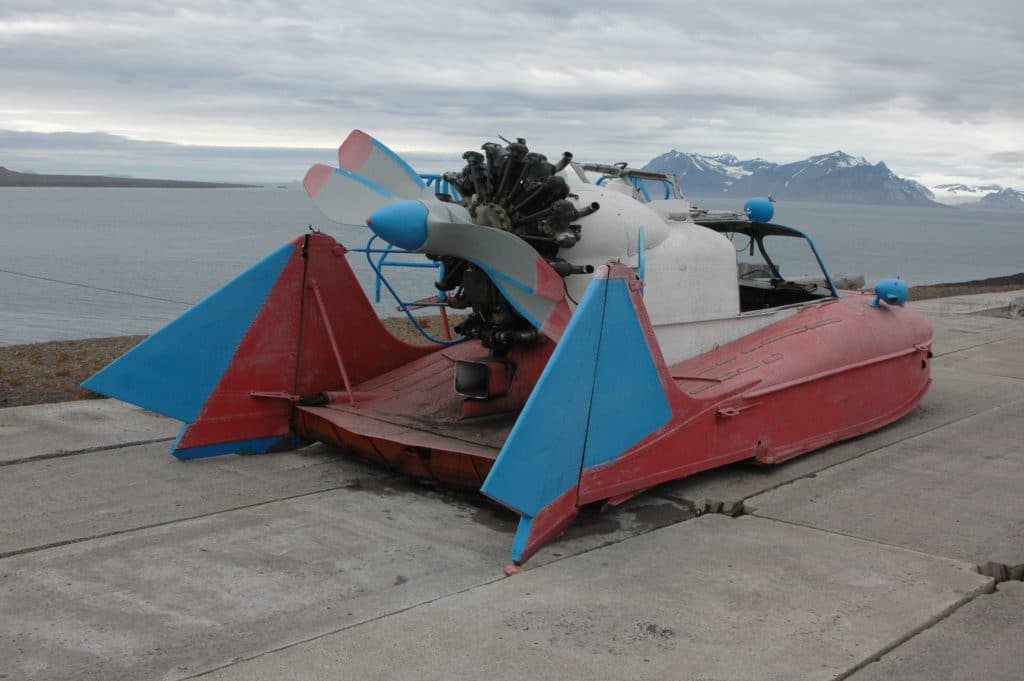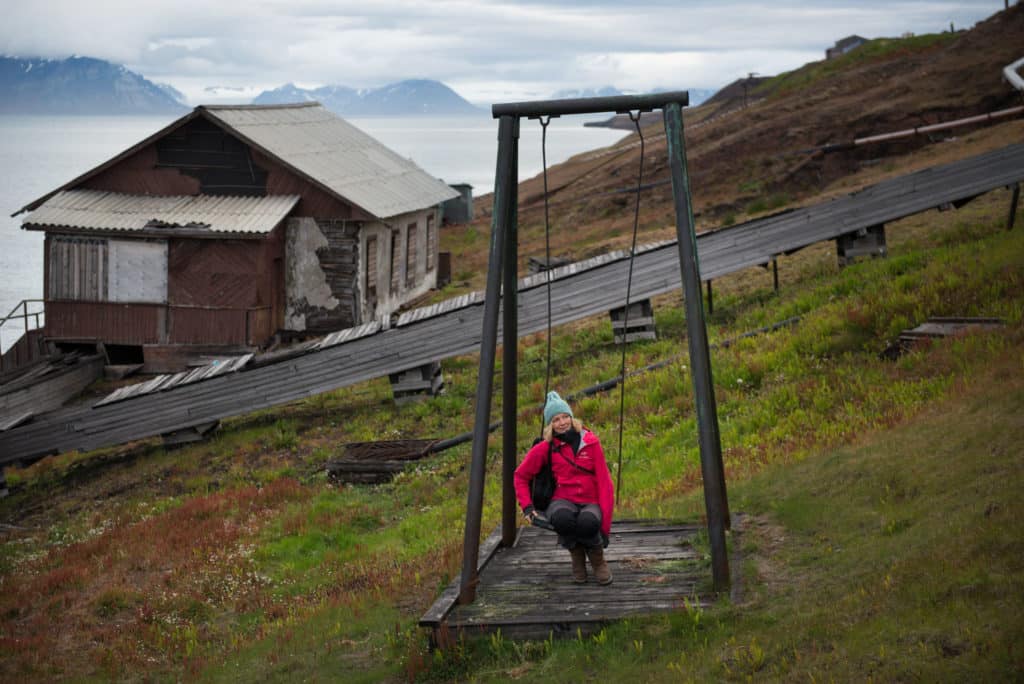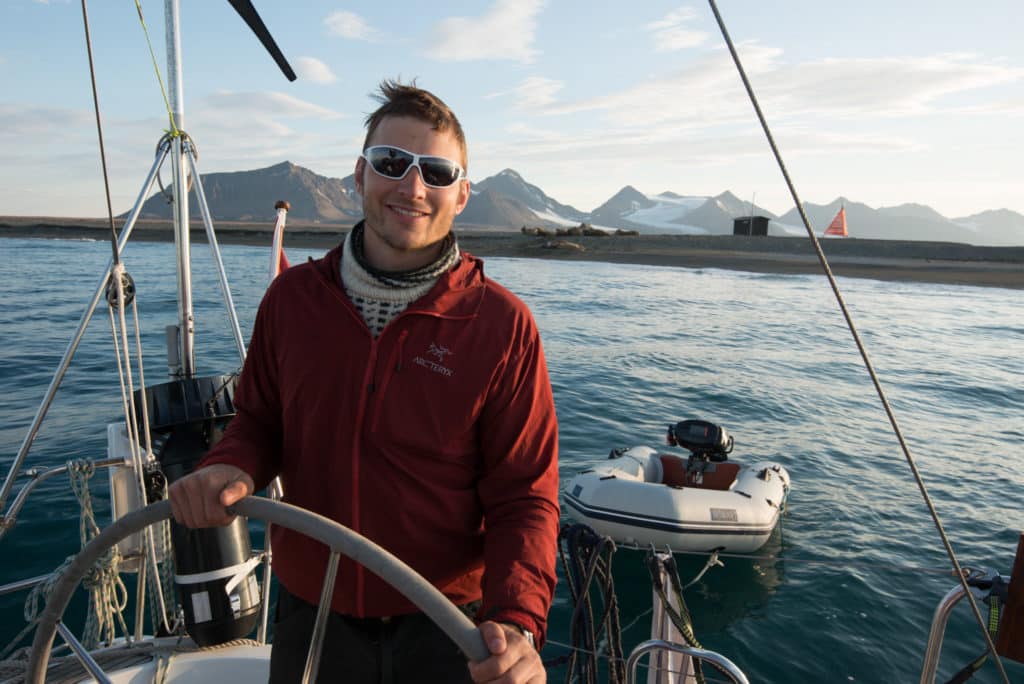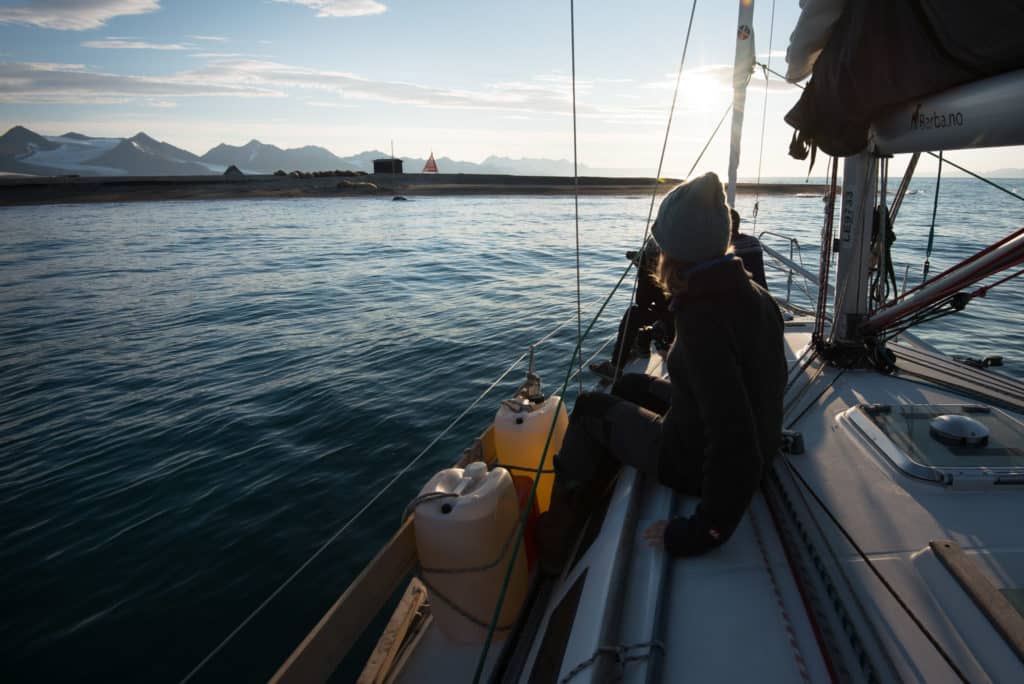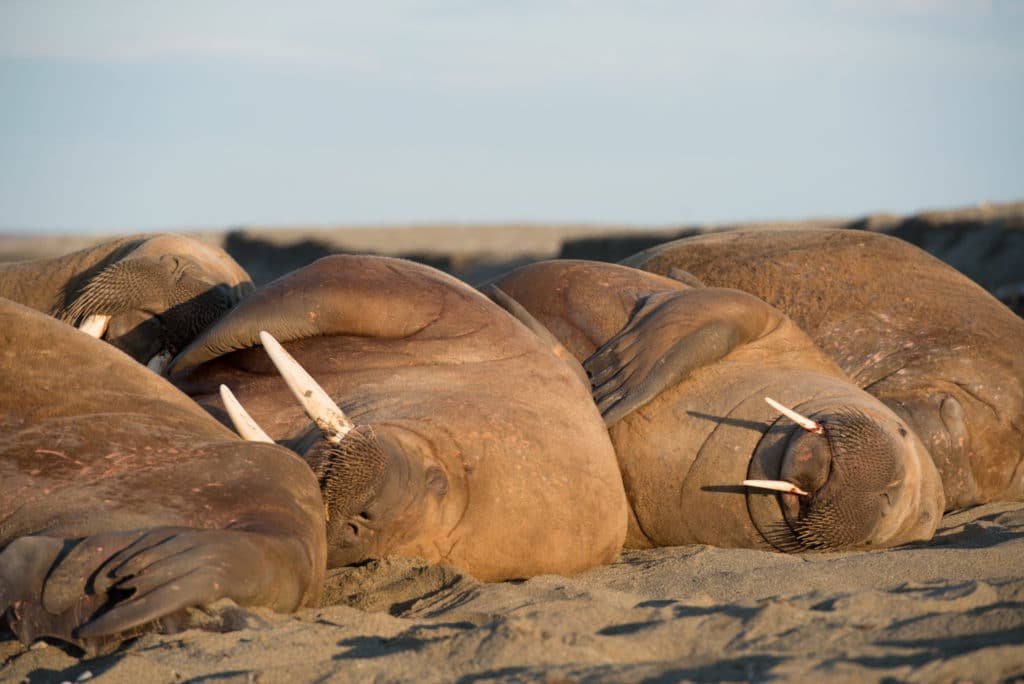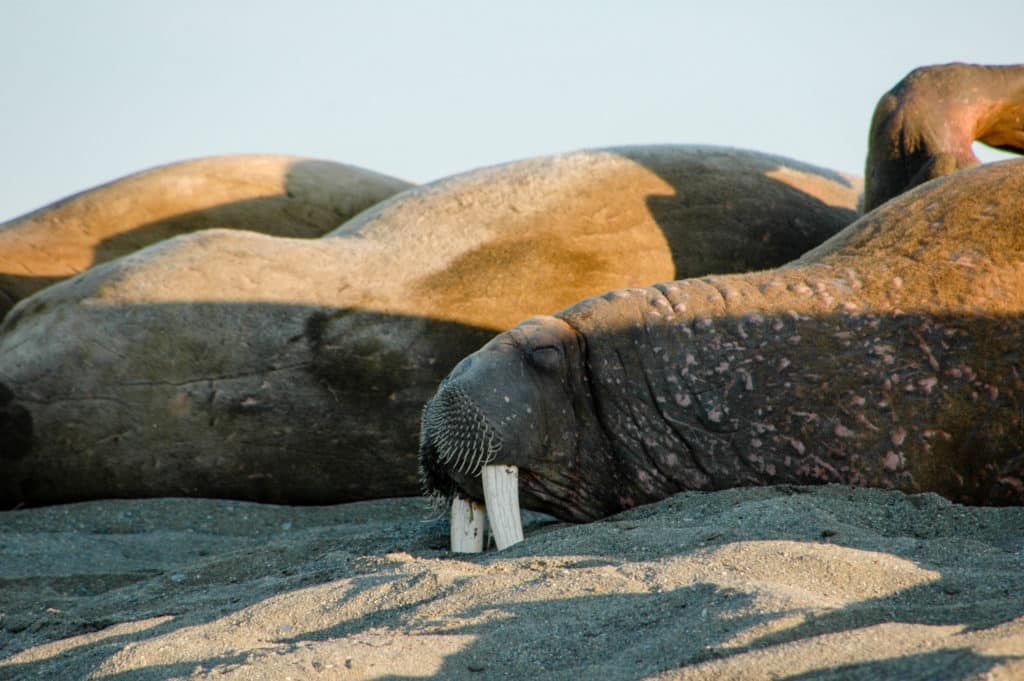If our Longyearbyen port of call was a little piece of the Continent in Svalbard – or more like a little piece of the world, considering all the people we met from all over there – then Barentsburg was something different entirely. A little piece of Russia, to be precise.
A Russian settlement and coal mining town just a five-hour sail away from Longyearbyen in neighboring Grønfjord, Barentsburg is home to around 500 people, the majority of whom are Ukrainians, followed by Russians. Named for the Dutch explorer Willem Barentsz, Barentsburg is home to one of the northernmost Lenin statues (everything in these parts is labeled “northernmost”) as well a ramshackle collection of old timber houses, a museum devoted to the Pomor history in Svalbard and one very tidy and welcoming hotel and restaurant/brewery in the middle of town.
Ivan, our Russian sailor, had been especially looking forward to visiting Barentsburg and the other Russian sites near Longyearbyen ever since we left mainland Norway. But unkind winds kept up from getting up to Pyramiden, an abandoned Russian town that a well-traveled friend had described to me as the most bizarre place she’d ever seen. So we knew we had to make the most of our time in Barentsburg.
Within seconds of mooring up at the floating dock, under the shadow of the still-in-use coal conveyors and storage pits cut into the hillside above us, Ivan crossed his first fellow countrymen. He proceeded to arrange for us a sauna session at the nearby hotel. It felt a bit indulgent considering we’d just enjoyed our fair share of hot showers while in Longyearbyen and weren’t even properly dirty yet. But the creature comforts are so much more enjoyable when you know you’ll all too soon be deprived of them again.
So we headed to the hotel and soaked in a super-hot sauna then followed it up with a delicious Russian meal at the Red Bear Brewery restaurant, complete with Ivan’s obligatory “50 grams of cognac.” The saying has become a bit of a buzz phrase on Barba thanks to Ivan, and “cognac” usually refers to vodka but could also mean a shot of gin, whiskey or, rarely, actual cognac. Russian sailors employ vodka to keep warm, ward off colds and all kinds of other uses, Ivan tells us. And the percentage of alcohol the “cognac” contains should increase with the degrees in latitude one finds oneself north. It’s important to enjoy the vodka with bread and a bit of garlic. And we always end with Ivan’s heart-felt toast to the moment and “Arktika.”
One night wasn’t enough in Barentsburg. So the next day we had a chance to visit the Consul General of Russia to Svalbard at his office near the Lenin statue. The Consul General was a friendly gentleman who loves speaking French (before Svalbard his posts took him to Monaco and Marseilles). And he was proud to show us the mural of Fridtjof Nansen and the famous Russian Arctic explorer Vladimir Rusanov in the welcome area, festooned with Norwegian and Russian flags. The Consul General’s attaché was a motivated young translator named Mikhail who invited us to enjoy lunch at the stalovaya – the Soviet-style cafeteria where most of the townspeople eat the next day. We feasted on all kinds of cabbage and beet salads, meat balls and soups (katlety, piraski, borscht, etc.) for what would have cost less than $3 a piece had we not been invited. A far cry from the small fortunes we shelled out in Longyearbyen for burgers, klippfisk and the like.
We could easily have lingered longer in Barentsburg but we can’t deny the pull north toward the ice, where all the animals we’ve come to see are living. So we sailed out of Barentsburg for Kapp Starostin to see the remains of a Pomor hunting station that has an important place in Svalbard trapper lore thanks to a Russian Pomor who lived here for many decades, overwintering alone, in the 19th century. Then we sailed up to Poolepynten, a popular stop with cruise ships and other boats to see the large male walruses that haul out on the sandy beach here. Most of the walruses we will see on the west coast of Svalbard are males as the females and their pups stay to the east of Nordaustlandet and toward Franz Josef Land.
Most firsts in life are a cause for celebration. But it was a particularly good Friday night on Barba when we arrived near Poolepynten and mistook the blows of walruses for whales. When you’ve never seen something before how should you know how it really looks? Well, walruses from a distance looked a like small whale to the crew’s untrained eyes, which we were plenty excited about. So we all were giggling like school kids as we got closer and realized these were no whales. Two ridiculously huge walruses poked their heads up to check us out at exactly the same moment within a few meters of Barba. And we took turns dinghy-ing in to the beach for a closer look at the animals, too, which lounge much like puppies or kids watching TV. They lay right next to eachother and seem to insist on almost always touching and scratching under their whiskers or bellies much like an inertia-bound man on a couch. When one among them does something untoward there’s a momentary flurry of irritation and tusk-brandishing before things settle down again. It was a riot to watch. But at 2AM, the sun still blazing brightly bright enough to require sunglasses, we decided it was time to sail on.
And now we found ourselves in port in Ny-Ålesund, surrounded by glaciers and floating ice in this research town with stations for scientists from India, Korea, France, Germany, Norway, Japan and other nations (there’s no US station, and I do wonder why). The winter population here of 40 or so people balloons to 120 in the summer.
The Barba crew has a way of arriving in port on just the right night, and we’ve just been told we’re here the one night the pub is open. So we’re getting ready to toast one last hurrah in civilization before bidding human settlements of any size adieu.
The plan tomorrow is to make our way toward the ice-free areas up north. This is the moment we have been longing for over the last half-year of planning. Finally we will be entering true wilderness and isolation, with only ourselves and Barba to rely on. This is when things truly start to get interesting. We are here not only for the nature and wildlife but for the challenge of sailing in a place so few sailors go.
As we head north we will meet the sea ice. Barba is many things, but an ice breaker is not one of them. The sea ice has been a challenge since the first explorers ventured up here centuries ago and still is. We will avoid sailing into the ice, but with shifting winds we could still end up getting trapped as the ice is transported by winds and currents. Our chances of circumnavigting Svalbard initially looked rather grim. A few weeks ago the ice charts showed the entire east coast as blocked by dense sea-ice that prevented access for even the larger ice-classed cruise vessels. The latest charts look more promising, however. It’s still too dense right now to circumnavigate, but the ice seems to be retracting. And with favourable weather conditions we hope to be able to navigate through it when the time comes.
In two to three weeks we will download the latest ice-charts, and then make the call if we sail back to Norway back down the west coast of Svalbard, or if we go for the circumnavigation. Nature decides in the end. It´s one of the things we appreciate the most out here on our floating home. We have to live with nature and follow her commands. The areas we visit are all ruled by the weather and ice, so nature dictates our next steps. These are, of course, the same rules explorers have followed since the beginning of time. And tomorrow night when we leave the comfort of another Svalbard port one last time, we will be five excited modern polar explorers aboard the good ship Barba heading out into the unknown under endless midnight sun.
To follow along with the latest updates, visit the Barba blog at http://barba.no/.
